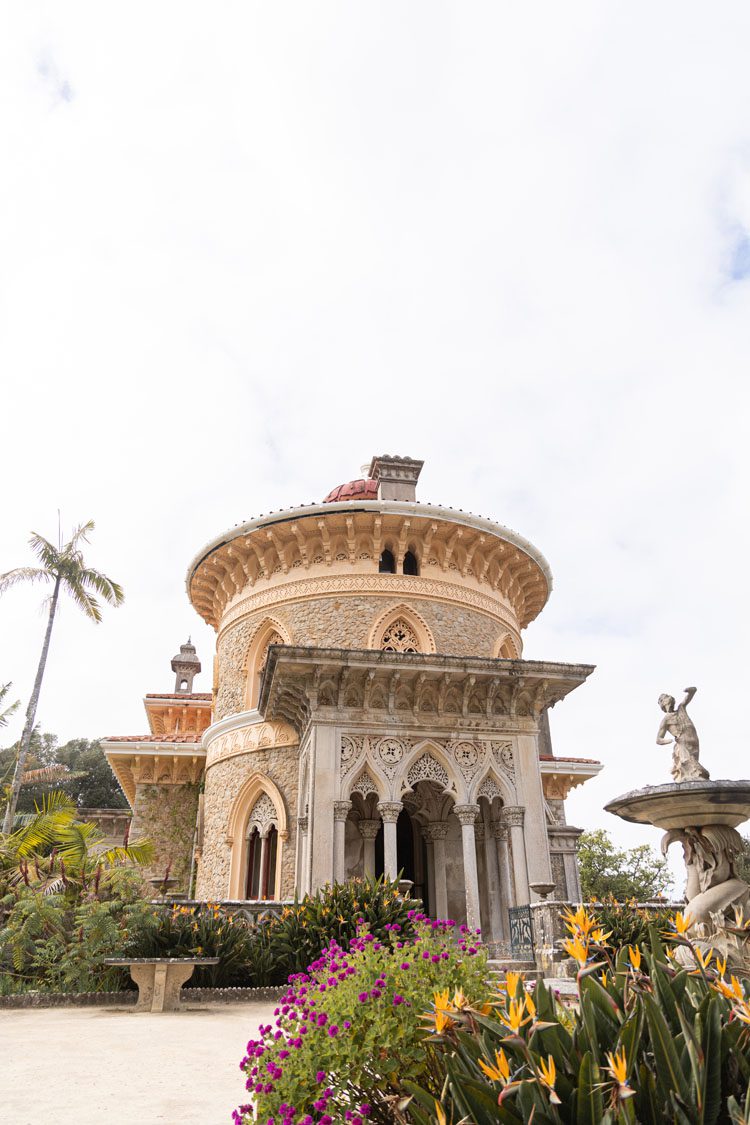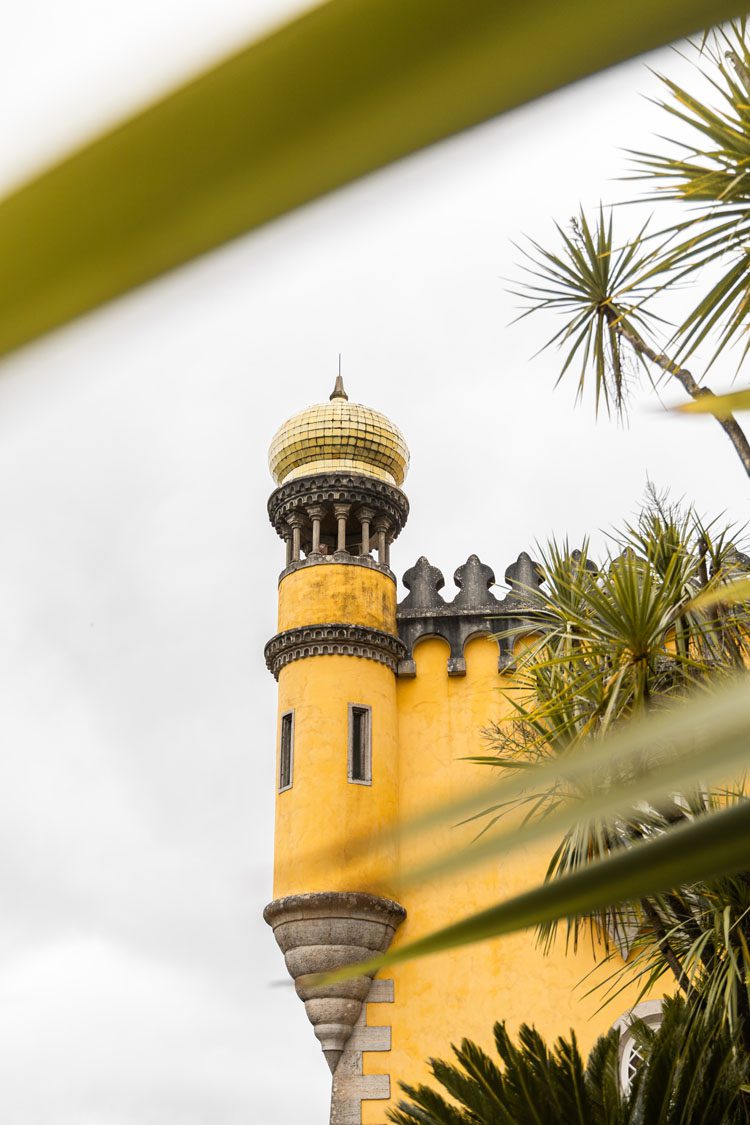Sightseeing & activities in Lisbon
1. Hop on tram 28 towards Alfama – One of Lisbon’s oldest neighborhoods
In Lisbon, the iconic yellow trams have been running through the city since the 1930s. A nice thing to do is to take a ride on line 28. This is the most famous line and runs right through the historic city center and through the most authentic neighborhoods of Lisbon. Buy your ticket from the driver and enjoy the ride through the steep winding streets.


You can go to Alfama by tram. This is one of the oldest neighborhoods in Lisbon. Here you will get to know the Portuguese way of life. Stroll through the authentic streets and admire Lisbon’s oldest cathedral, Sé Catedral. In the evening you can enjoy Portuguese music in one of the many fado restaurants. Fado is the more than 150 year old Portuguese life song and comes from the poorest neighborhoods of Lisbon.



Other highlights of Alfama are the beautiful viewpoints Miradouro das Portas do Sol, Miradouro de Santa Luzia and Miradouro de Santo Estêvão.
2. Admire the beautiful sights of the city center
Baixa and Rossio together form the lively center of Lisbon. The neighborhoods are full of sights, large squares and eye-catchers.
Arco da Rua Augusta
At the end of the busy shopping street Rua Augusta is the large triumphal arch Arco da Rua Augusta. The arch represents the reconstruction of Lisbon after it was destroyed by a terrible earthquake in 1755. The arch connects the city center with the main square Praça do Comércio.
Tip: You can get on top of the arch for an amazing view of Praça do Comércio and the Tagus River.


Praça do Comércio
One of the most beautiful squares in Lisbon is Praça do Comércio, which borders the Tagus River. Before the earthquake in 1755 caused major damage, this was an important place. The royal palace was located here, heads of state were received and moored their ships and it was the center from where Portugal controlled the trade with all its colonies. Today, the enormous square has a monumental statue of King José I in the middle and is surrounded by bustling terraces of restaurants and impressive buildings.

Elevador Santa Justa
In the middle of the shopping area is the 19th century Santa Justa, an iron elevator that was intended to connect the lower city of Baixa with the upper city of Chiado and Bairro Alto. Lisbon is built on hills and by the invention of this elevator you had to climb steep hills less often. It is possible to take the elevator up to enjoy a great view of the city.
3. Taste the typical Portuguese Pasteis de Nata
Eating Pasteis de Nata was definitely the highlight of our visit to Lisbon. Throughout the city there are bakeries and restaurants where you can buy these golden creamy delicacies. But be warned; once you have tasted one, you will want more and more!
Everyone makes Pastel de Nata in their own way, so some are crispier or have a little more cinnamon or vanilla flavor than others. You can eat the original Pastel de Nata at Pasteis de Belém, where the pastries were first made and sold. They are crispy, creamy and topped with powdered sugar and cinnamon. Yummy!
Do you want to make Pasteis de Nata yourself? Then we have the perfect recipe for Pasteis de Nata for you!

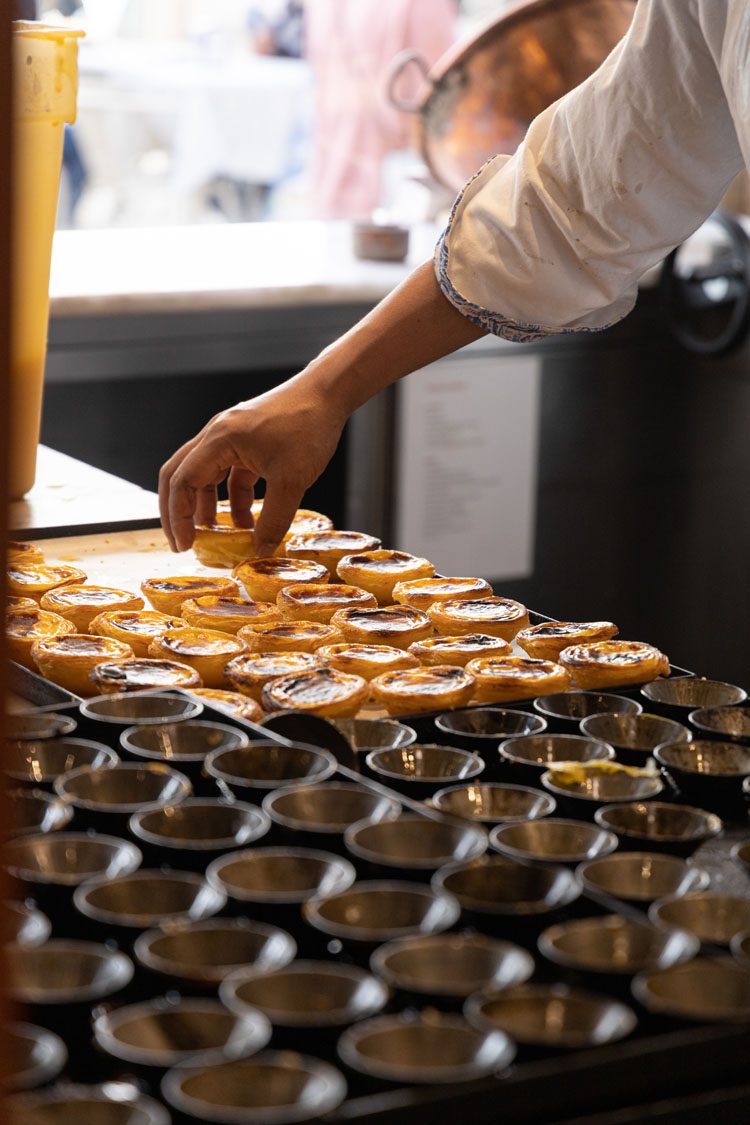
4. Stroll along the Tagus River
A walk along the Tagus River is relaxing. There are also many beautiful sights to admire.
Ponte 25 de Abril
During the walk you will enjoy great views over the bridge Ponte 25 de Abril, which is certainly the eye-catcher of the walk. This 2.2 kilometer long bridge connects the city center with the south bank. At its highest point, the bridge hangs 75 meters above the Tagus. In the evening the bridge is beautifully lit. So don’t forget to take an evening stroll along the Tagus.

Monumento Cristo Rei
The hundred-meter high Cristo Rei monument stands atop a huge pedestal on a hill on the banks of the Tagus. With the imposing statue of Christ, Portugal begged God not to involve the country in the Second World War. The statue stands with protective arms spread out towards the city.

Torre de Belém
Be sure to take a look at the floating Torre de Belém, a former defensive tower from the 16th century. The tower is currently a national monument to commemorate the voyages of discovery and trade in the Golden Age. Torre de Belém can be reached via a bridge and from inside you have a nice view of the river, Ponte 25 de Abril and the monument Cristo Rei. A visit to Torre de Belém cost €9. You can buy the tickets here or if you have a Lisboa Card the entrance is free.
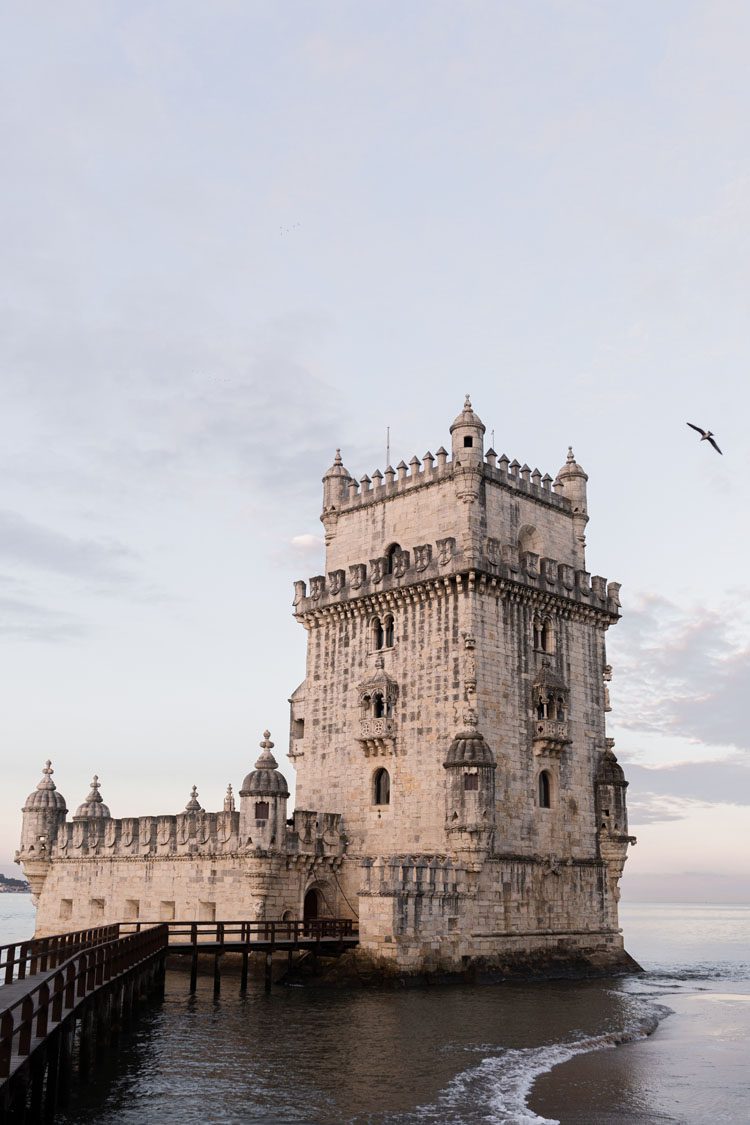
Padrão dos Descobrimentos
Admire the monument Padrão dos Descobrimentos up close. It is built in honor of the Portuguese explorers who explored the world in the 15th and 16th centuries. The structure has the shape of a ship with wavy sails.
5. Enjoy the creativity in LX Factory
Under the bridge Ponte 25 de Abril you will find LX Factory, an old factory site and nowadays the place to be. It is a hidden artistic and cultural hotspot brimming with creativity. The old factory buildings now house impressive art galleries, alternative design shops and unique pop-up stores. Spot the colorful street art and have a snack or a drink at one of the many bars, restaurants or rooftop bars and mingle with the locals and creatives.



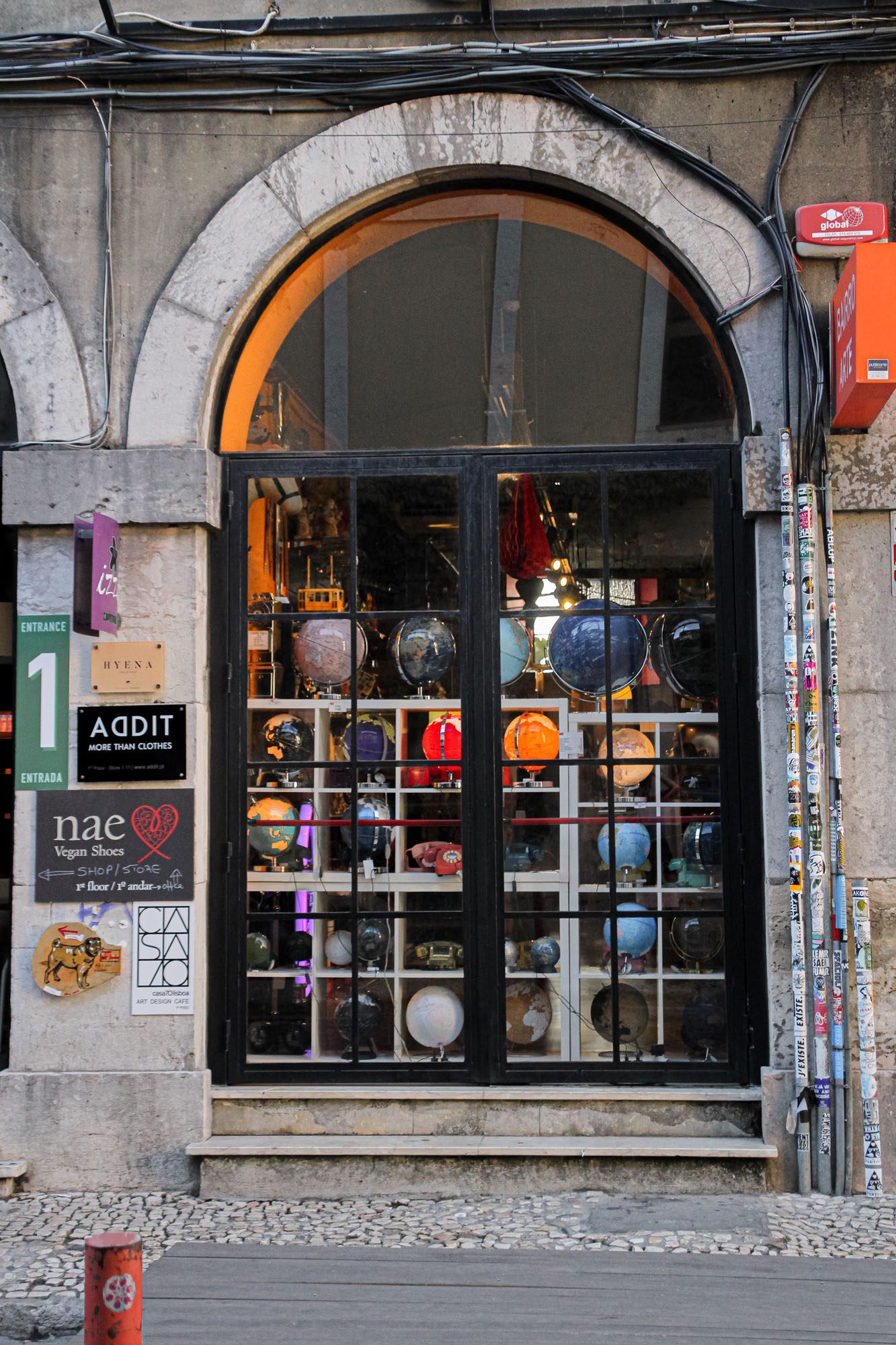
6. Spot the most beautiful tiled buildings and facades
As you walk the streets of Lisbon, you will see azulejos (painted, tin-glazed ceramic tiles) everywhere. They are decorated with all kinds of patterns, figures and colors. The tiles make the facades of the houses, the walls of monasteries, churches, palaces, train stations and even parts of fountains and gardens super colorful. We went out to collect the most beautiful tiles for you.
7. Visit the National Tile Museum of Lisbon
If you are interested in the history of the tiles or if you just want to spot some exclusive ones, we recommend you to visit the National Tile Museum of Lisbon. The museum has an extensive collection of the ceramic tiles. The Moors introduced the tiles and the Portuguese have completely absorbed it into their culture. The museum’s collection shows how the style and design have changed over the years. Also the location of the museum is very special. The museum is located in a 15th-century monastery that consists of beautiful archways, an inner garden and a church. A ticket to visit this beautiful museum cost €5 which you can buy here. Do you have a Lisboa Card? Then the museum is for free.
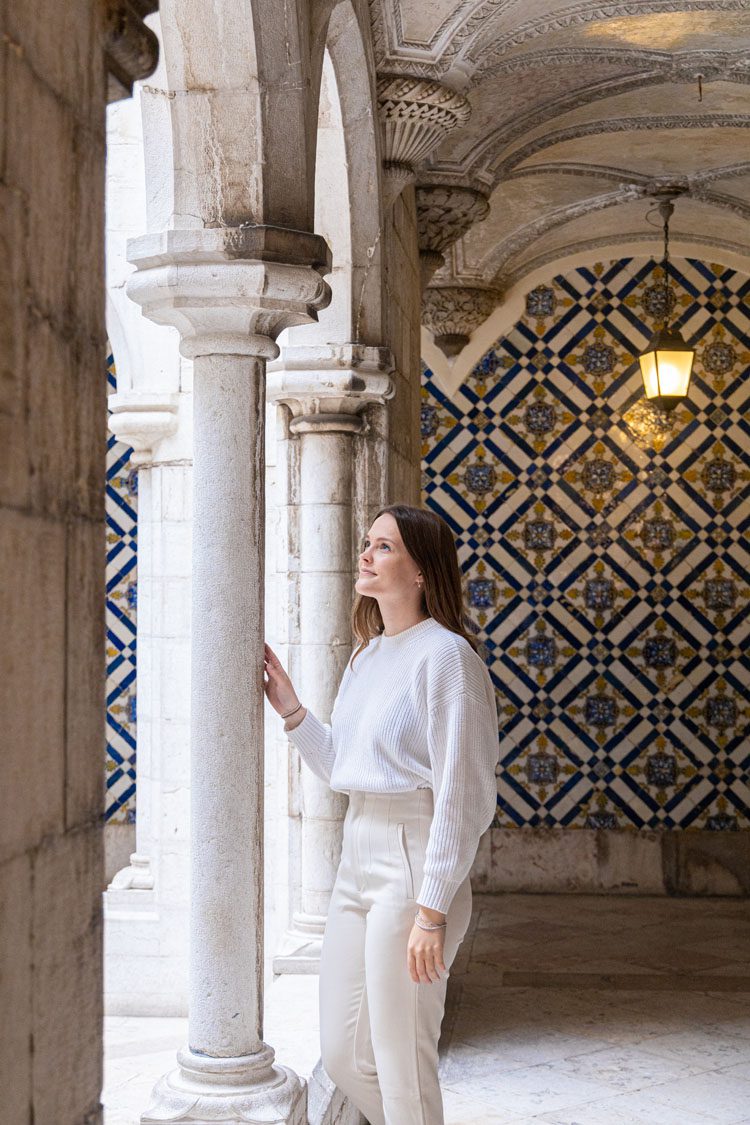
8. Watch the sunset from one of Lisbon’s miradouros
Lisbon is located on 7 hills and therefore has several spectacular viewpoints. Our favorite miradouros are miradouro da Graça, miradouro de Santa Luzia, miradouro das Portas do Sol and miradouro de Santo Estêvão. At each of these viewpoints you look out over the terracotta colored roofs and you can spot the special highlights of the city from a different angle.

9. Get lost in the streets of Mouraria, Bairro Alto and Chiado
In addition to Alfama and Belém, Lisbon has a number of great neighborhoods, each with its own atmosphere and character.
In the Mouraria district you will spot a lot of art, especially graffiti. Another (literal) highlight is to climb to the Castelo de São Jorge castle, which is located on the highest hill in Lisbon. From here you have a beautiful view. Furthermore, you experience local life at its best by getting lost in Mouraria. The district is known for the many decorated and atmospheric streets full of bars and restaurants.
Tip: End up at the cozy bar Empanadas Union for a drink and a small bite, cheers!
One of the most famous sights in Bairro Alto and Chiado is the Convento do Carmo Monastery. After the disaster in 1755, this monastery turned into a ruin of remaining Gothic arches. The missing roof, and the damaged columns show how devastating the earthquake was.
10. Visit the impressive Mosteiro dos Jerónimos
In the Belém district you will find a number of historical buildings, monuments, museums and cultural highlights, including Mosteiro dos Jerónimos. This monastery was built after the successful overseas explorations and shows how powerful and rich Portugal was in the 15th and 16th centuries. Admire the detailed arches, the special courtyard garden with fountain and the church with colorful stained glass.
A ticket for Mosteiro dos Jerónimos cost €10. Get your ticket in advance. You can also visit Mosteiro dos Jerónimos for free with the Lisboa Card.


11. Experience Lisbon’s vibrant nightlife on Pink Street
Discover the vibrant nightlife in the Cais do Sodre district, which was first known as the red light district of Lisbon. For hip bars, restaurants and good nightlife, head to Rua Nova do Carvalho, better known as Pink Street. Here you can enjoy drinks, fun and music until late at night.
12. Discover futuristic Lisbon
Parque das Nações is a modern neighborhood in the east of Lisbon. You will find a lot of art, culture, a large oceanarium, the shopping center Vasco da Gama and futuristic buildings here. It is definitely worth a visit to this area. Spot the Vasco da Gama Bridge and the Vasco da Gama Tower. Want to see it from above? For only €4, you can float over the Tagus in a cable car. It is nice to walk the way back along the boulevard.


13. Try food from the Time Out Market
The Time Out Market is an old market hall. Taste different cuisines, order what you like and take a seat at the long tables. The atmosphere is great and there is something for everyone.
Experience Lisbon in a different way
Where to eat?
In Lisbon you will find cozy bars and restaurants on every corner of the street. These are our favorite spots for a drink or something to eat.
💛 Vegan Junkies Club
💛 Café Janis
💛 Café Frutaria
💛 Augusto Lisboa
💛 Fauna & Flora
💛 O Botanista
💛 Empanadas Union
💛 Manteigaria (in this tiny factory you get the best Pastel de Nata)
How to get around in Lisbon?
The best way to explore Lisbon is by foot. In this way you can easily discover the typical, winding streets. We loved to get lost in the different neighborhoods and spent hours of doing some random explorations!
You will also use public transport. Lisbon is hilly and Belém and Parque das Nações are quite far outside the city center, so to walk everything is very tough. Traveling around by public transport in Lisbon is easy. There are lots of bus and tram stops throughout Lisbon, so you will always find a place nearby where you can get on.
Tip: The cheapest way to travel around Lisbon by public transport is to buy a rechargeable ticket, called Viva Vigem, at the train station. Otherwise you pay a ticket at the driver (only cash) for €2 per ride, no matter how many stops you travel.
Lisboa Card
An other option to travel around in Lisbon is with a Lisboa Card. You have options to buy a Lisboa Card that is valid for 24, 48 or 72 hours. With this card you can travel unlimited by train (also to Sintra and Cascais), tram and bus. And you also avoid queues and visit several sights for free or with a discount. For example you have free access to Torre de Belém, Mosteiro dos Jerónimos and the Santa Justa Elevator. See here if this card will save you money.
Trips from Lisbon
Must do: A trip to Sintra
You can travel by train from Lisbon to Sintra in 40 minutes. Here you step into a completely different, fairytale-like world. The area has been a World Heritage Site since 1995 and consists of several castles and summer palaces surrounded by exotic gardens. Almost all sights are built on the hills of Sintra, so you often have beautiful views over the green surroundings.
There is a lot to see, so think about what you want to visit in advance. We visited Sintra twice and recommend planning up to 3 sights in a day. Our favorite sights are the romantic summer palace Monserrate, the colorful Pena Palace, the mysterious gardens of Quinta da Regaleira and the special castle Castelo dos Mouros.
![]() Read our extensive blog about Sintra and discover which sights you would like to see during your day out.
Read our extensive blog about Sintra and discover which sights you would like to see during your day out.
